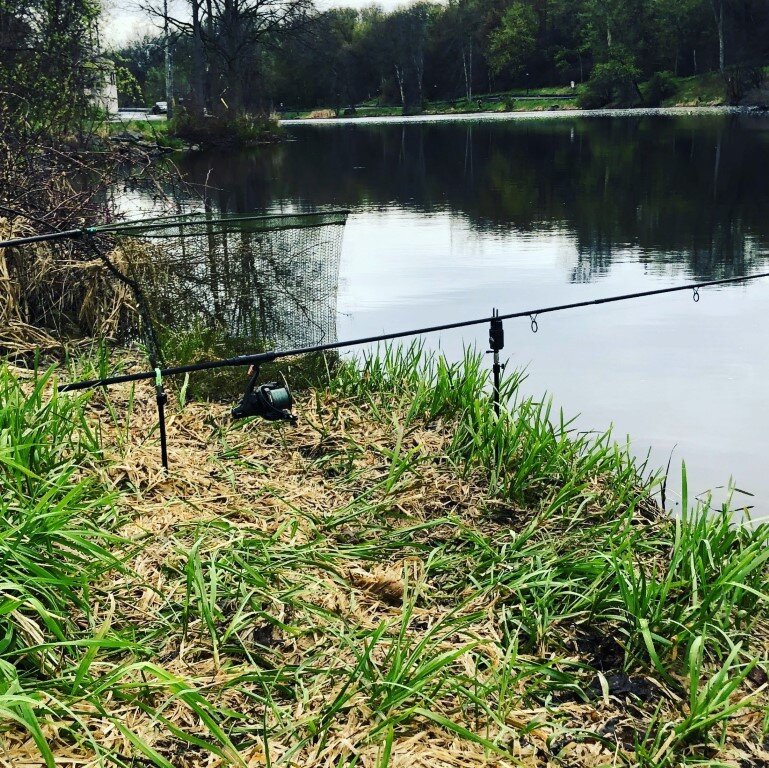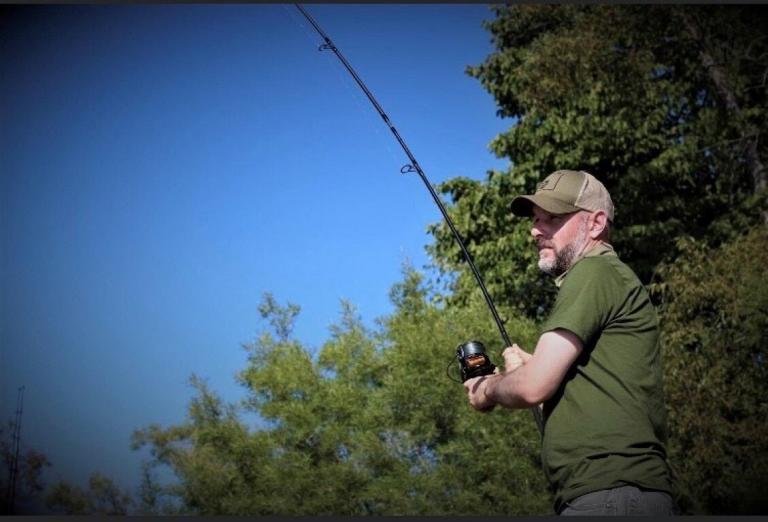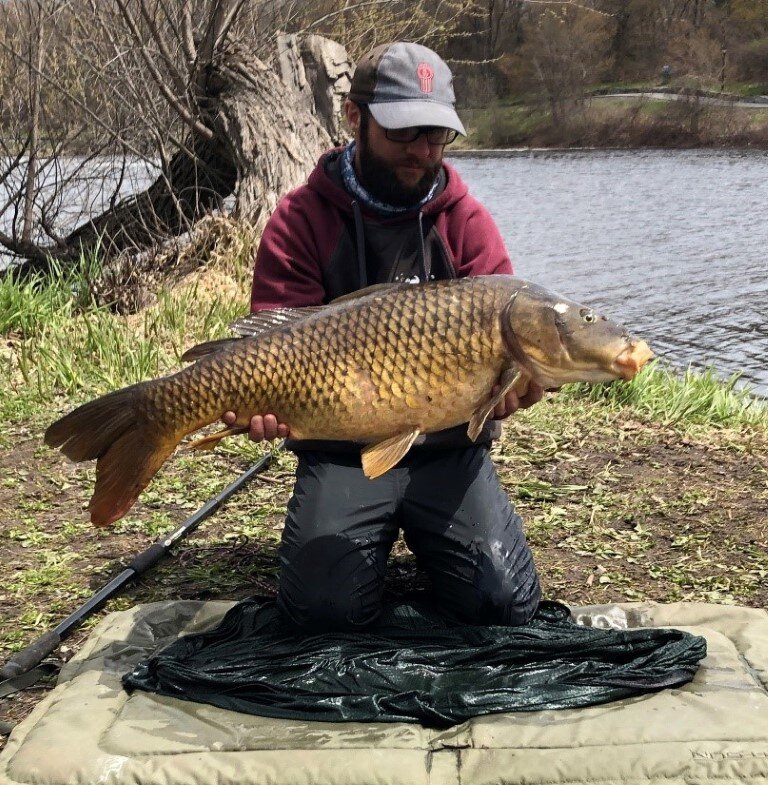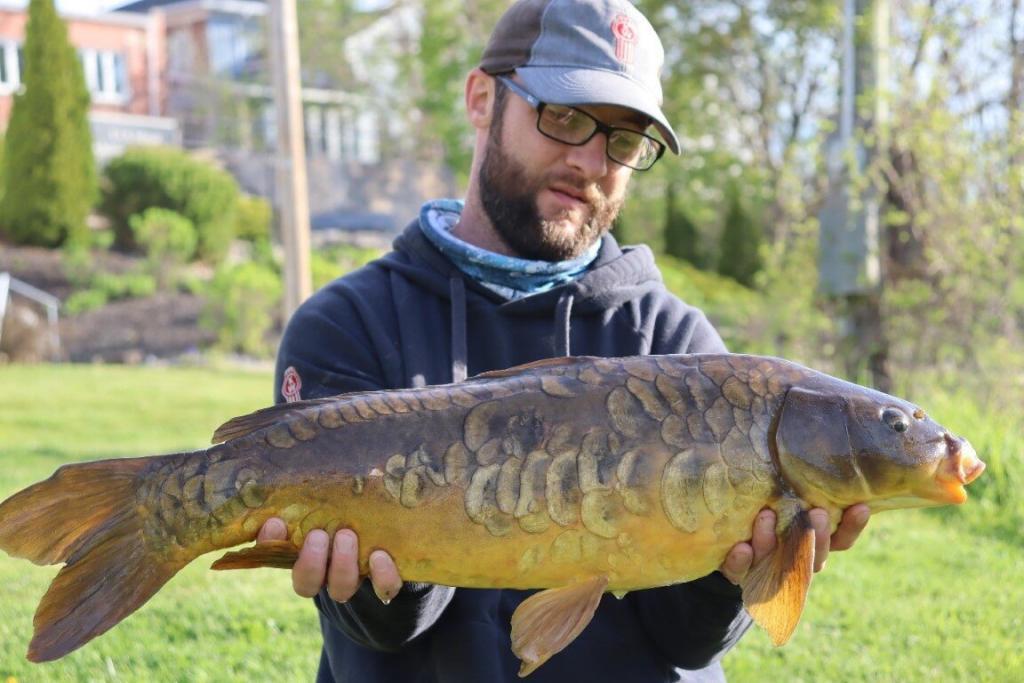
Part 5 - Carp Care & Equipment
Sean Martin, Ben Thomas and Galen Yerex
This is the most important part when it comes to Carp fishing as we as Carp anglers truly cherish these fish and dedicate a lot of time and effort as well as money to seeing them swim away healthy and safely, which in most opinions, is the most rewarding part of the catch. Seeing that this is a catch and release group, we ask that you please follow these guidelines as we discuss the proper care and handling of this giant yet beautiful fish. Fish care does not begin when the fish is in the net, it starts from your selection of equipment and tackle, through out the battle, right down to taking a quick pic before sending it back to the depths. Let us dive into to this very important part of Carp angling, and examine a few highly recommended, yet affordable pieces of gear one should look to acquire when it comes to Carp Care.

Rods, Reels, Tackle, and Lines: Like we stated in the previous sections, factoring in the sheer size and power of these brutes is critical when it comes to not only landing the fish, but the health and well being of said fish as well. Having inadequate equipment can be very harmful to a fish as it can result in hook pulls or breaks which can damage the mouth of the fish, line breaks which can result in fish getting tangled on logs and rocks as well as the potential for longer lengths of cut line to wrap around the fish itself. You also want a rod that will handle the powerful runs without putting too much pressure on the fish as well as having the backbone to retrieve the fish as quickly as possible without causing harm, and a reel that can handle screaming run after screaming run. These are a few factors to think of when applying fish care into the gear selection process.
During the Battle: When it comes to fish care during the battle the most important factor to consider is the softness of a Carp’s mouth. Because of this it is very important not to horse the fish, and if it wants to run, then let it run. The more resistance you apply the more likely that hook will start to wear down and tare the flesh in the mouth of the fish which can be very harmful depending on the size and condition of the wound. Being able to properly maneuver the fish, especially in the currents, can make all the difference in a quick retrieval and puts less stress on the fish which should allow for a healthy, safe release. When fishing the currents try and guide the fish toward any slack water, or as close to the shore as possible as this will hopefully limit the chances of it bolting off into the faster water on a mega run or two, which in turn, increases your chances of a hook pull or line break. In most cases you can control the direction a fish travels by simply adjusting the angle and direction of your rod, which is something you should be practicing while you are out on the banks.


Netting the Fish: The net is absolutely an essential piece of kit when it comes to Carp fishing and dragging them in without one is greatly frowned upon in the Carp community. When it comes to selecting a net for Carp fishing, size is of great importance, as these are not a small fish by any means, as you are likely to find the average being 10+ pounds and again, there is the chance of a 30+. I would suggest something over 30 inches if possible, with most Carp anglers using 40+ inch nets. The longer the handle the better as well, as it allows you to reach the fish quicker, and greatly reduces the chances of it thrashing around in the shallows and pulling the hook or breaking the way. You can find some nets with handles in excess of 6ft in length. If possible, try and find a deeper, mesh net as this provides plenty of space and proper protection for the fish. Rubber nets are a great and affordable alternative to the more Carp specific nets and are available at most retail stores. Try to avoid nets with large rope webbing if possible as this will decrease the chances of the fish getting its fins or gills caught, which can cause serious harm. Lucky Strike, NGT, and Sonik are few quality yet affordable online options. A quality net goes a long way to ensuring the safest handling possible.

Handling the fish out of water: Safety is of the upmost importance whenever you have the fish out of the water, and improper handling will not be tolerated. The second you take that fish from the water the clock starts ticking to return it as quickly and safely as possible to ensure a healthy release and if, at all possible, try and remove the hook in the net and release right away. For those stubborn hooks, or in the case of quality fish being landed, and you wish to take a few pictures or a quick video, you will likely need to handle the fish on land. This is where we get into some equipment that can greatly reduce the amount of stress on the fish, and the potentials for damage caused by it thrashing around on shore.
First let us look at Mats. These can range from a folded tarp, yoga mats, to the more Carp specific Mats and Cradles online. All vary in shapes, sizes and materials, but ultimately serve the same purpose. These protect the fish from getting cut or stabbed, as well a hitting its head off the ground when thrashing around resulting in serious bleeding and in some cases even death. A few exposed rocks or sticks can cause serious damage to a fish, so having a safe and protective barrier for them is very important. Not that we are saying you need to go out and purchase one, it is simply a suggestion. You are fine to put the fish on the ground but if possible, always try to lay the fish down in some soft, plush grass. Most importantly, try to avoid laying the fish down onto rocks at all costs. If you are looking for a cheaper alternative, then Yoga mats are the way to go. You can find these at most Walmart and Canadian Tires, and they come in variety of lengths and colours to suit your needs. Heck if you get bored you can always practice some Yoga lol. If you are looking for a more Carp specific mat, there are some quality yet affordable options available, with NGT, Aqua, and JRC, being just a few.


Another great piece of kit to have when it comes to handling Carp on the bank, would be a quality floating retaining sling or weigh sling. These can be used as a combination or purchased separately. These are very useful when moving the fish around either for pictures or to and from the mat, which is not only safer for the fish, but easier on you as well. You can find mats which act as both, which is a great convenience and saves on some cash, which never hurts feelings. A retaining sling is a handy piece of kit especially for pictures and videos, as it allows you to put the Carp into the water, inside of a floating protective mesh sling, to allow it to recuperate while you are getting setup, as well it allows the fish to rest for a longer period if required due to a lengthy battle. I highly recommend investing in a quality weigh sling if possible, as it is the safest way to get a weight on that prized catch. Do not, and I repeat, do not weigh a Carp by the gills at any time. This can cause serious harm if not death, as that is a weak point on a Carp, especially with the bigger ones. Due to the sheer size of these fish, it is quite easy to damage the gill plate or tear it, one could even take the Carps head right off, and I have heard stories of it happening, so caution and care is very important when handling your catch. A few options to look for are Gardner Tackle, JRC, and Sonik to name a few.
While we are talking about weighing your catch, let us have a quick look at some different varieties of scales to choose from. You can find your average spring loaded, scales at your local retail stores, and they do the job when needed but you may lack in accuracy after a few fish as the spring starts to wear. There are some more accurate digital options available from Fox to Rapala, with some more Carp or Specimen options available online such as Korum, and Reuben. Factoring in the size of these fish, I would recommend investing in tripod or weigh bar if possible, but not a necessity. When it comes to Carp, I recommend a scale that can easily handle a 50lb fish for best accuracy whether using a digital or specimen dial type option.
Let us quickly go over a few safety points about taking pictures and videos of those gorgeous captures. First, we need to remember that we cannot hold the fish up by the gills. Now that we have that in our heads, let us focus on holding the fish safely and comfortably. If possible, please try to keep the fish on, or over some form off a mat when it is out of the water. Whether standing, squatting or kneeling, the most comfortable way to hold a Carp is with one hand just bellow the head, and the other at the back of the stomach area. Depending on the size you can hold it up and straight out or close to your body, or you can just cradle it with your arms. In my opinion the more comfortable you are, the safer the fish is, so get situated before you snap that pic or hit record and be sure to have a good hold of the fish. Try and be as quick as possible and always try and pour some water over the fish a time or two if you can, to not only get water into the gills, but it also helps rinse the fish for the camera. Smile and enjoy for years

That brings us to the final stage, which is the release of your beautiful catch. Again, having some form of sling or mat combo would be best suited for this, but if you do not have that option, just remember to keep the fish as safe as possible, with a good grip before you get it into the water. Please do not just toss is back like one would with a Bass. If you can, try to release it at the waters edge, or even better, wade out a few feet and release it by cradling it or holding it by the tail until it is ready to swim away safely. You will know when it is ready to go, as with the flick of a tail, the fish is gone from your clutch, and let me tell you that there is no better feeling than watching a quality Canadian Carp swim away safely, knowing you accomplished what you set out to do, and that you gave that fish the respect it deserves to see it off with a safe return.

Well folks, now that we have covered the fundamental basics when it comes to Carp fishing, I am quite confident that you now possess the knowledge to not only successfully bait and gear up for these magnificent fish, but more importantly to confidently target and capture them as safely as possible. We here at CCS hope that you will turn your newfound knowledge into a lifelong passion and share with us this amazing sport we call Carping. This truly is a community like no other, with anglers worldwide sharing our passion and dedication to capturing and respecting this amazing and beautiful species. Go get yourself setup with some gear, make up some bait, hit the banks, and we hope you enjoy some of Canada’s best fishing opportunities.
Thank you for following the series and we wish you safe and successful Carping.
Tight Lines


